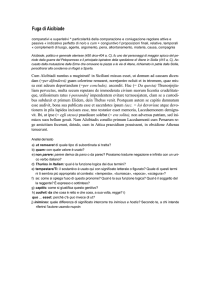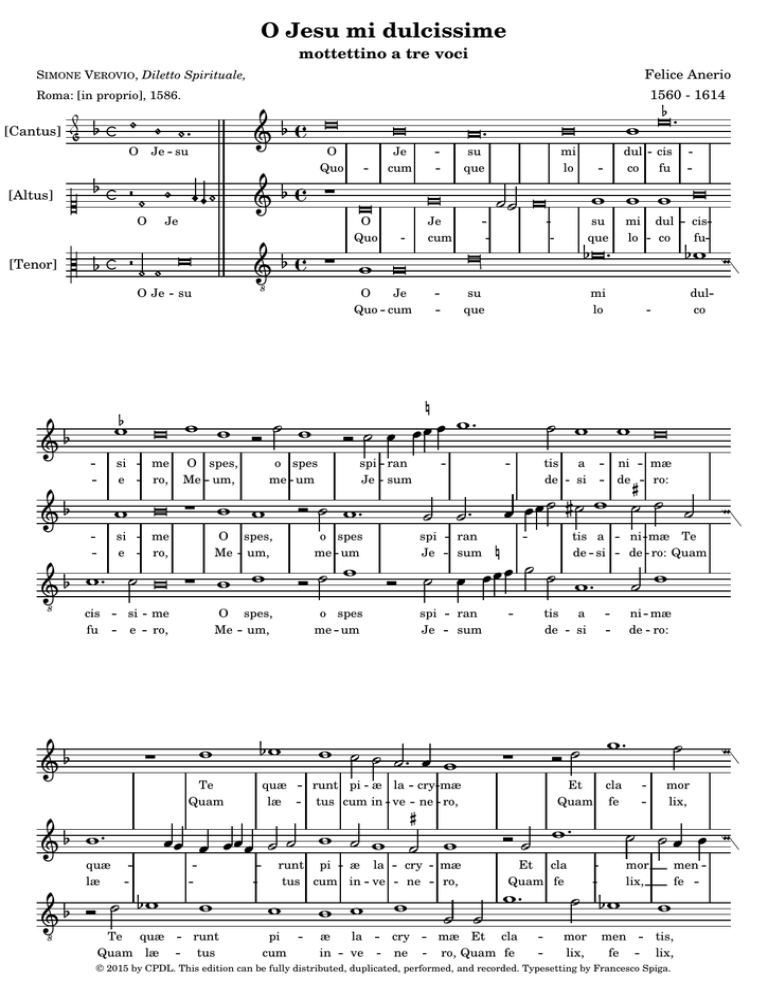
O Jesu mi dulcissime
mottettino a tre voci
Felice Anerio
SIMONE VEROVIO, Diletto Spirituale,
Roma: [in proprio], 1586.
[Cantus]
[Altus]
[Tenor]
O
Je
©
me
ro,
cis
fu
O spes,
Me um,
o spes
me um
Te
Quam
quæ
læ
runt
tus
pi
cum
su
que
mi
lo
spi
Je
ran
sum
spi
Je
ran
sum
runt pi æ la cry mæ
tus cum in ve ne ro,
æ
in
la
ve
mi
lo
dul
co
cry
ne
cry
ne
mæ
ro,
cis
fu
dul
co
a
si
tis
de
cis
fu
ni
de
mæ
ro:
tis
de
ni mæ
de ro:
a
si
Et
cla
Quam fe
Et cla
Quam fe
mæ Et cla
ro, Quam fe
ni mæ Te
de ro: Quam
tis a
de si
æ la
runt pi
tus cum in ve
Ø
o spes
me um
su
que
spi ran
Je sum
dul
co
Ø
Je
cum
Te quæ
Quam læ
o spes
me um
me
ro,
8
O spes,
Me um,
mi
lo
su
que
O
Je
Quo cum
O spes,
Me um,
quæ
læ
8
su
si
e
Je
cum
©
Ø
Ø
O
Quo
me
ro,
Ø
si
e
O
Quo
si
e
Ø
O Je
8
Je su
O
1560 - 1614
mor
lix,
mor
lix,
mor
lix,
men
fe
men
fe
tis,
lix,
© 2015 by CPDL. This edition can be fully distributed, duplicated, performed, and recorded. Typesetting by Francesco Spiga.
2
men
fe
tis,
lix,
cla
et
quam fe
mor men tis in
lix cum te nu
tis, et cla
lix, quam fe
8
et cla
quam fe
ti mæ.
e ro.
mor men tis
lix cum te
mor
lix
men
cum
in
nu
Ø
tis
te
ti mæ.
e ro.
ti mæ.
e ro.
in
nu
NOTA DEL REVISORE
ABOUT THIS EDITION
Il Diletto Spirituale è una raccolta del 1586 di mottetti,
canzonette e madrigali spirituali di vari compositori
raccolti dall olandese Simone Verovio. Tutti brani sono
presenti in disposizione a libro corale (singole parti
vocali giustapposte) e in doppia intavolatura per
tastiera e per liuto. Le parti vocali hanno una notazione
anomala, perché i valori delle note sono dimezzati
rispetto a quelli comunemente in uso all epoca, e presso
gli stessi compositori presenti nell antologia.
Diletto spirituale is a 1586 collection of motets, sacred
songs and madrigals of various composers, published by
the Dutch musician and engraver Simone Verovio. All
the collected pieces are printed in choir-book disposition
(juxtaposed single parts) and in double tablature for
keyboard and lute. Vocal parts are written in an
anomalous notation: note values are halved, compared
with the figures generally used in 16th century, and furthermore - by the composers included in the
anthology.
Una possibile ragione può essere trovata nel fatto che la
pubblicazione era pensata in particolare per i liutisti (lo
stesso Verovio lo era), e le intavolature di liuto
impiegano delle figure molto più piccole rispetto a quelle
della musica vocale. Questa edizione ripristina i valori
normalmente in uso nella musica vocale, e pertanto
risultano raddoppiati rispetto all originale.
A possible reason may be the fact that this work was
mainly dedicated to lutenists (as Verovio himself was),
and lute tablatures have much smaller note values than
choir-books. This edition restores the normal 16th
century note values. Therefore, they are doubled
compared with the source.
Le parti vocali sono scritte più in alto rispetto alle voci
cui sono destinate: ciò si evince dall uso delle chiavi di
violino e di mezzosoprano, non corrispondenti ad alcun
registro vocale in uso nel Cinquecento. Questo stile di
scrittura si dice in chiavette o all'alta, ed è dovuto al
fatto che talvolta era più comodo per il compositore
scrivere in questo modo le parti vocali staccate.
Vocal parts are written in a higher register than the
proper one: this is gathered from the treble and
mezzosoprano clefs, which do not refer to any vocal
register used in Renaissance music. This notation style
is called, in Italian, in chiavette or all'alta. It was
common among 16-17th century composers for
sometimes it was more comfortable in single parts
writing.
In presenza di questo stile di scrittura occorre tenere
conto che le chiavi sono mobili e non indicano dei suoni
reali: la lettura del brano è da eseguirsi nelle chiavi di
trasposizione più adatte alle voci che si hanno a
disposizione.
In this higher notation clefs are movable and do not
show any fixed note: they must be replaced with the
transposition clefs which fit best to the available voices.
For a modern mixed choir, a fourth lower transposition
may be suitable in this case:
Per un moderno coro a voci miste, una trasposizione alla
quarta inferiore sembra in questo caso appropriata:
[Cantus]
© © O
[Altus]
Je su
O
[Tenor]
©
O Je
Je
su
O
Je su
O
O Je
Je
su
O
su
Je
O
8
O
Je
Je
Music engraving by LilyPond 2.18.2—www.lilypond.org
su

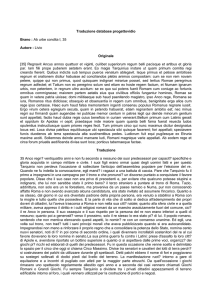
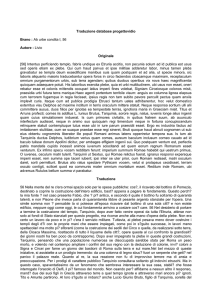
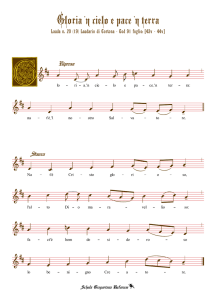
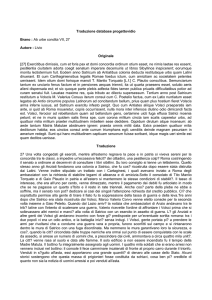
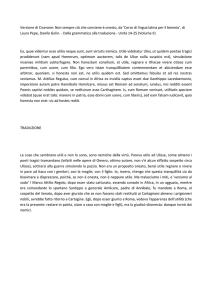
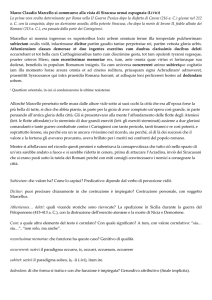
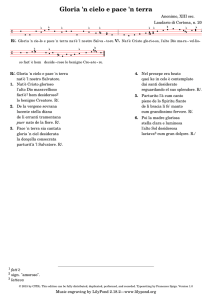
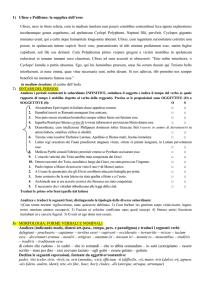
![Litteris consulis praetorisque [lectis censuere patres]](http://s1.studylibit.com/store/data/000092569_1-d9e3e610155626201b5f9c05e41782f2-300x300.png)
